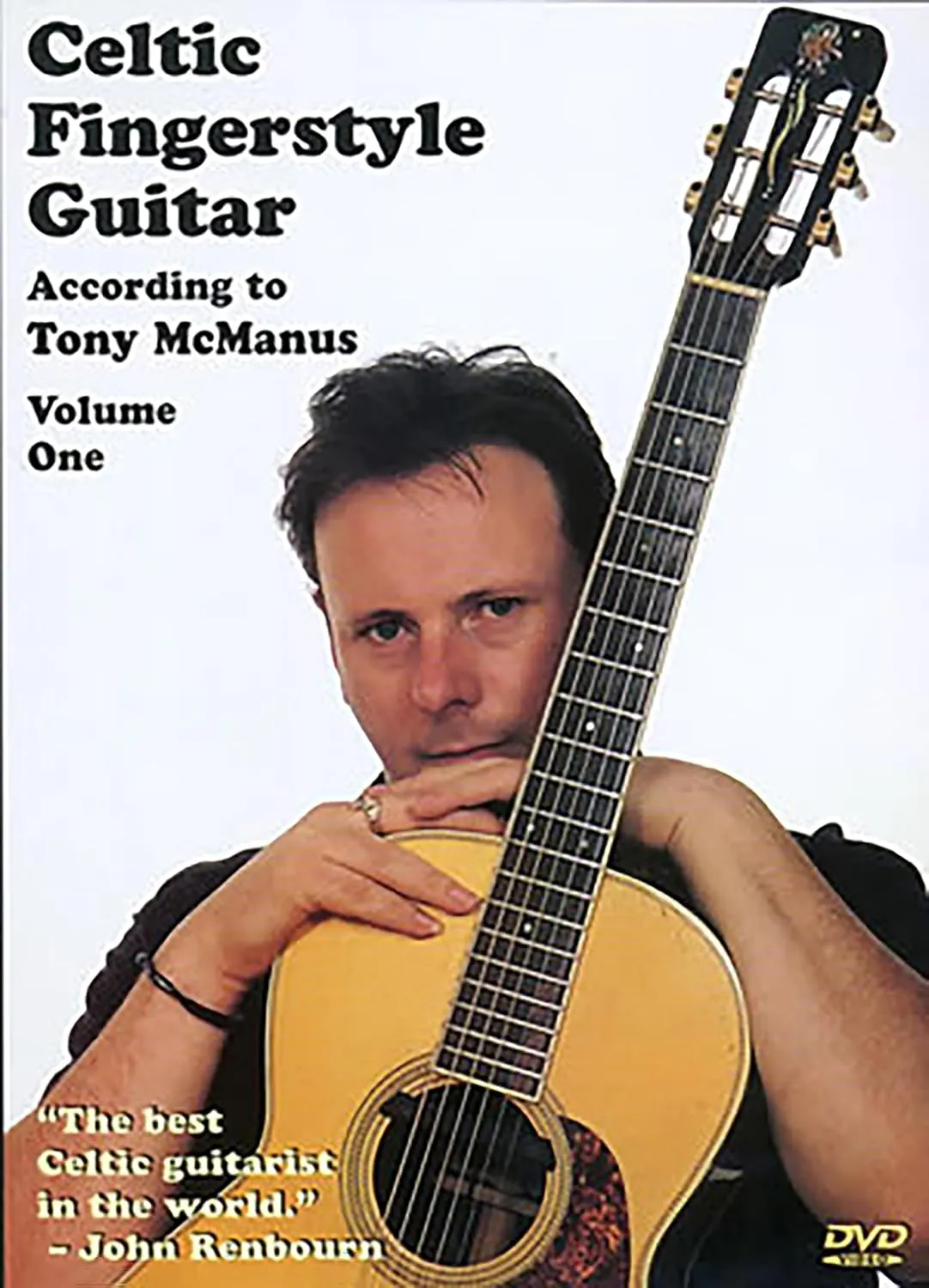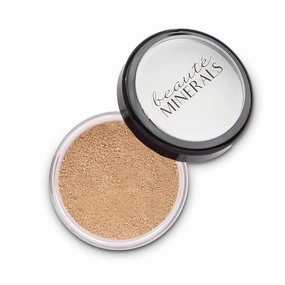Product Description
Tony McManus is an adept master of Celtic fingerstyle guitar, both in terms of adapting Celtic music to the guitar, and in its performance- presenting all its intricacies, graces, and frills, yet at the same time maintaining the pace and drive which characterizes the style of this music. In this first lesson, Tony discusses in detail the importance of ornamentation and triplets in Celtic music and how they can be technically achieved. He illustrates these ideas with several melodies played in dropped D tuning. This is followed by a discussion of scales and fingerings and playing reels in the DADGAD tuning. This is a challenging lesson for the fingerstyle guitar student interested in learning Celtic music from one of the finest players of this idiom. A detailed tab/ music booklet is included as a PDF file on the DVD. DVD is region 0, playable worldwide.
Review
Tony McManus is a Scottish guitarist who made a splash when he debuted at the Edinburgh Folk Festival in 1995. Since then he has released a solo guitar album and toured with Brian McNeill and Alastair Fraser. John Renbourne has called McManus "the best Celtic guitarist in the world." McManus's reputation is based partly on his uncanny ability to translate fiddle and bagpipe tunes to the acoustic guitar, and make them sound like they were written for the guitar. His playing is relaxed and fluid and the finger-style technique provides a harp-like quality to his sound at times. His precise use of ornamentation can also mimic the fiddle and the bagpipes. In addition to McManus's obvious skill as a musician, these videos illustrate his abilities as a teacher. The videos are quite conversational, with an easy, relaxed pacing and McManus's dry sense of humor. Volume One begins by discussing the Celtic genre, as well as some ideas about translating Celtic music to the guitar. He begins with "Islay Ranter's Reel" (in dropped-D tuning). McManus explains the music and the technique thoroughly. For example, he discusses the use of ornaments and how to achieve them without sacrificing the strong sense of rhythm which marks Celtic tunes. One of the lessons in the first part of this video is the importance of an "economy of movement" in the right hand. McManus also spends some time working on triplets, including how to play triplets with the thumb (thus making it more efficient to do them on any string). The video uses a split screen during the tunes, showing both hands at work. For each of the seven tunes on the first volume, McManus discusses some of its features, plays it through, talks about it a bit more, and then slows it down and plays it in segments. Other tunes include the classic, "Ye Banks and Ye Braes" (where he explains his arrangement and how it was developed), the strathspey "The Ewie wi' the Crooked Horn" (with its dense rhythmic complexity) and four tunes in DADGAD tuning. However, before moving to the DADGAD tunes he goes over scales and fingerings and a general approach to the tuning. Thus, he makes sure that people are comfortable in the new tuning before going on. This is a nice addition, and one which is often absent when guitarist instructors move abruptly from one tuning to another. His version of "Jackie Coleman's Reel" will leave many guitarists in the dust, but it is inspiring to watch the precision of fingerstyle guitar well-played. Another DADGAD tune, a lush rendering of "Hector the Hero," features a fine use of false harmonics (and he explains this technique fully). The second volume is focused more specifically on Scottish music, including jigs (single, double and slip), reels, pipe marches and strathspeys. He features several unusual tunings which are especially designed for bagpipe tunes. He starts off with a march, strathspey and reel, "Irene Meldrum's Welcome to Bon Accord/Hecla/The Ramnee Ceilidh." In general, there is more complex ornamentation and playing in Volume Two, and the teaching of the first set of tunes takes over 30 minutes. As McManus introduces the tunes, he tends to make some comments about their provenance. Another highlight of volume two is "The Seagull," a tune in DAAEAE. Throughout, McManus illustrates valuable lessons about how to integrate the ornamentation styles of other instruments into the guitar's repertoire. The package includes booklets with all of the tunes in tablature and standard notation, as well as some notation of ornamentation. The instruction is geared toward students at the intermediate to advanced level. This is an impressive set of videos with awe-inspiring playing, a solid teaching approach, and useful playing tips for a wide variety of acoustic guitarists. --Dirty Linen
John Renbourn has called Scottish musician Tony McManus the best Celtic guitarist in the world, and he may well be right. McManus is a triple threat on the instrument. He can flatpick highly ornamented jigs and reels at the lickety-split tempo of a wild seisun ; his inventive arrangements and sensitive backup have made him a favored accompanist with fiddlers such as Alasdair Fraser, Johnny Cunningham, and Kevin Burke; and he is a splendid fingerstyle interpreter of Scottish and Irish tunes. His new Celtic Fingerstyle Guitar According to Tony McManus instructional videos provide ample evidence of his prowess in adapting tradiional fiddle and pipes music to the six-string, combining idiomatically proper tune readings with sophisticated modern settings. Celtic tunes have been a staple of the fingerstyle repertoire ever since Davey Graham blew away the folk scene with his virtuosic D A D G A D arrangements of jigs and reels in the early 1960s. Despite masterful adaptations of fiddle tunes and harp pieces by pickers such as Pierre Bensusan, Duck Baker, and Pat Kirtley, the fingerstyle guitar world and the mainstream Irish and Scottish traditional scene have remained in separate camps. But McManus spans this gap with ease. He grew up in the midst of traditional music in Paisley, Scotland, and he learned the old tunes on fiddle, tin whistle, and mandolin before taking up the guitar. This foundation in the tradition gives McManus guitar work a depth and authenticity of phrasing often absent when the music of wind and bow is adapted for picking. McManus is particularly good at the ornamentation that defines the Celtic idiom. It s tricky on the guitar to approximate the rolls, crans, and cuts that grace a proper pipe tune, but McManus melds hammer-ons, pull-offs, and plucky prestidigitation to get it right. He is particularly adept at the triplets that are typical of Scottish fiddle bowing, and the first video devotes a fair amount of time to helping the novice picker get a handle on this devilish right-hand technique. McManus offers a brief introduction to each tune and plays it at concert tempo several times through, often varying the arrangement with each repetition. He then examines in detail several elements of each tune to provide insight into rhythm, ornamentation, and technique. Finally, he repeats the tune very slowly, with a split screen offering simultaneous close-ups of both hands. A booklet with notation and tablature is included with each tape, but McManus patient demonstrations and repetitions of thorny passages obviate the need to study the dots.The common stock of Celtic-oriented fingerstyle tunes is heavy on the Irish harp compositions of Turlough O Carolan and a bit light on the dance tunes that are the backbone of traditional music. On tape I McManus introduces some meaty jigs and reels that are welcome additions to the canon. These relatively straightforward tunes are arranged in dropped D and D A D G A D. On the second tape he focuses on the Scottish tradition and includes a challenging slip jig as well as a full Highland pipe set of march, strathspey, and reel. The tunings go further afield on the second tape, with pieces in C G C G C D, C G D G C D, and D A A E A E, and some lovely slow airs round out the collection. The arrangements are first-rate throughout, and McManus varies his approach - using simple modal drones on one piece and elaborate jazz voicings on another. McManus often capos up to higher positions to ease the finger stretches required by some of his arrangements, and the higher pitches enhance the brilliance and clarity sometimes lost with alternate tunings. McManus plays a custom 000style 12-fret guitar made by Scottish luthier William Kelday throughout the proceedings. It sounds wonderful, even on a three-inch television speaker. The presentation is casual, but with s --Acoustic Guitar
- Aspect Ratio : 1.33:1
- MPAA rating : G (General Audience)
- Product Dimensions : 7.75 x 5.75 x 0.53 inches; 2.22 ounces
- Director : Tony Mcmanus
- Media Format : NTSC, Multiple Formats, Closed-captioned, Color
- Run time : 1 hour and 34 minutes
- Release date : July 19, 2005
- Actors : Tony Mcmanus
- Studio : Grossman Guitar Workshop
- Number of discs : 1







![CoverGirl Easy Breezy Brow, Fill Define Pencils [505] Rich Brown 2 ea ( Pack of 5) CoverGirl Easy Breezy Brow, Fill Define Pencils [505] Rich Brown 2 ea ( Pack of 5)](https://www.nailxtra.shop/image/covergirl-easy-breezy-brow-fill-define-pencils-505-rich-brown-2-ea-pack-of-5_DYhxdt_300x.webp)
![Maybelline Expert Eyes Twin Brow And Eye Pencils, Velvet Black [101], 2 ea ( Pack of 34) Maybelline Expert Eyes Twin Brow And Eye Pencils, Velvet Black [101], 2 ea ( Pack of 34)](https://www.nailxtra.shop/image/maybelline-expert-eyes-twin-brow-and-eye-pencils-velvet-black-101-2-ea-pack-of-34_fBuSwx_300x.webp)



